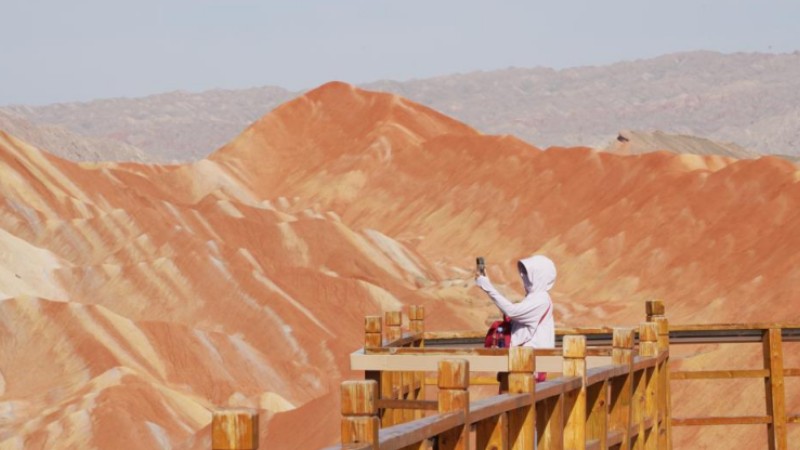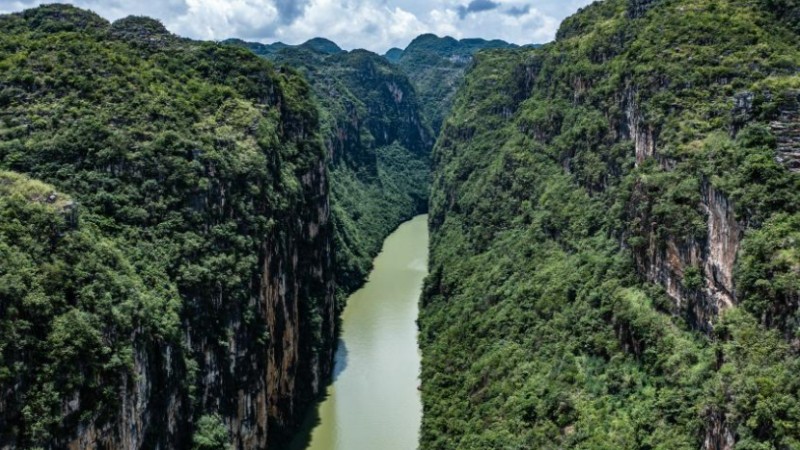Officials in U.S. West bracing for Valley fever spread
DENVER, United States, Aug. 7 (Xinhua) -- Although Valley fever is mostly contained in southern California and Arizona, health officials in America are fearful that historic dry conditions in the West will accelerate the spread of the deadly disease.
"More than 500,000 Americans could be sickened each year by Valley fever, the disease caused by breathing in the fungus Coccidioides," CBS News reported Monday.
New data released by the Centers for Disease Control and Prevention (CDC) suggested the toll inflicted on Americans by the fungus "could be more than triple the amount of widely cited previous estimates," and that climate change was exacerbating the spread.
There were some 20,197 Valley fever cases reported in 2021, "the most on record in a single year since the last peak of cases in 2011," the CDC reported. "Only a fraction of cases each year are reported."
CDC officials said last week that "when you compare the numbers now and in 2021 to 2014, they've increased pretty drastically since then," and that in "Arizona, it's basically doubled, and within California, more than tripled."
Symptomatic cases of Valley fever often start mild, with signs similar to influenza or COVID-19 like fever, cough, and rash. People may also experience headaches, fatigue, night sweats, and muscle aches or joint pain, the CDC said.
Symptoms typically develop "between 1 and 3 weeks after breathing in spores of the fungus, which occur naturally in the soil of some Western states," primarily across the Southwest, the CDC said and that some people can recover on their own, but that "dangerous complications can develop in as many as 10 percent of cases."
Scientists at the University of California, Irvine, have directly linked the resurgence of the disease to global warming and drought conditions.
"As the temperatures warm up, and the western half of the U.S. stays quite dry, our desert-like soils will kind of expand and these drier conditions could allow coccidioides to live in new places," Morgan Gorris, who led the GeoHealth study at the UC Irvine, told NBC News.
Last week, the California Department of Health (CDH) issued public warnings to address the increasing cases across the Golden State, saying that coccidioidomycosis or "cocci," typically affects the lungs and can cause "prolonged respiratory symptoms including cough, fever, chest pain, and fatigue or tiredness."
CDH officials urged residents in areas "with high rates of infections to mitigate dust stirred up by digging and minimize time outdoors during windy and dusty days," and "people at higher risk of severe disease can wear N95 masks to cut down on their exposure if they have to be outdoors."
The Infectious Diseases Society of America also recommended considering some preemptive treatments for especially vulnerable patients, like organ transplant recipients.
"There's just not a ton of awareness or knowledge about the disease. We do see a lot of travel associated cases, we've seen reports of cases popping up in places where we wouldn't have typically expected Valley fever to be endemic," Samantha Williams, an epidemiologist with the CDC's Mycotic Diseases Branch, told CBS News.
"No vaccine has been developed for the disease," the Food and Drug Administration (FDA) reported last year, even though the disease "poses a major threat to public health in endemic regions."
"Novel effective therapies are lacking, and drug development had stalled until recently," the FDA noted in a 2022 workshop convened to discuss Valley fever.
Photos
Related Stories
- Bankruptcy of 99-year-old U.S. trucking company concerns 30,000 workers, creditors
- 3 dead, 5 injured in multiple-vehicle crash in U.S. Long Island
- U.S. Congress deadlocked on new rules for railway safety: AP
- 3 passengers dead after charter bus crashes in U.S. Pennsylvania
- Firefighting helicopter crashes in Southern California
Copyright © 2023 People's Daily Online. All Rights Reserved.









